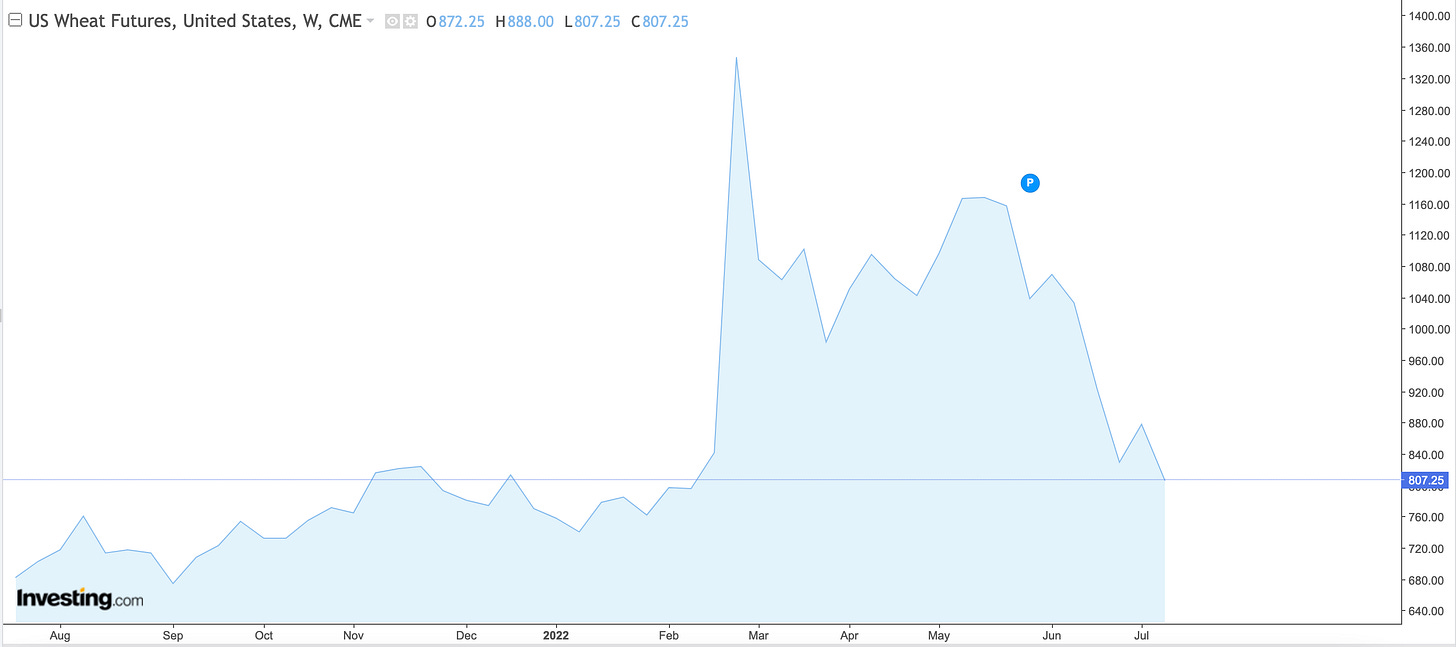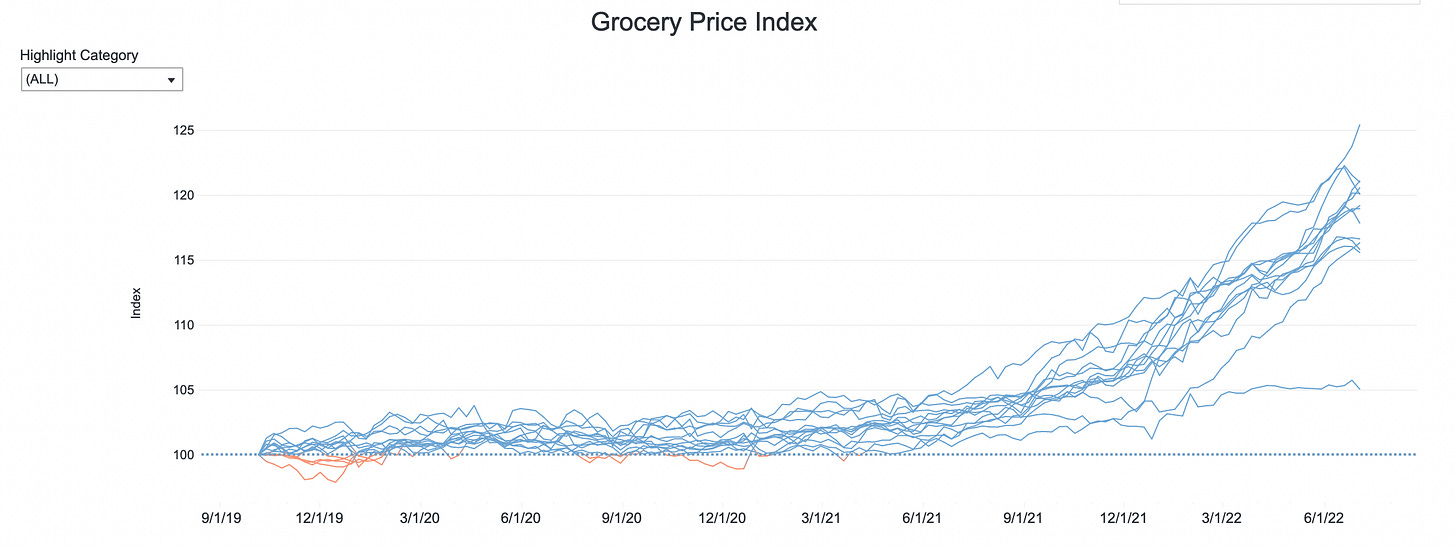As Western diners moan over costlier repasts, poorer nations are staring at bare larders
(Originally published July 13 in “What in the World“) First went our wheat. Then our salad oil. Then climate change came for the martini olives. Now, war has come for the hummus and risotto.
The war in Ukraine is reportedly crippling global supplies of chickpeas, as it turns out Russia and Ukraine are among the world’s top exporters of that versatile legume. At the same time, drought in Italy’s Po river basin is hurting production of the arborio and carnaroli strains of rice preferred for Italy’s creamy risotto.
The global food crisis is no joke. As mentioned in the last newsletter, the United Nations’ World Food Programme estimates that the number of people facing hunger has more than doubled, to 345 million, from 130 million before Covid-19. While commodity prices have been tumbling in recent weeks from post-invasion peaks, they remain near their pre-invasion highs and experts say it will take months if not years for relief to reach the poorest countries—too late for those facing starvation.

Food-price inflation is making life less savory for the wealthy nations, too. Again, even though commodity markets have been tumbling on fears of slower economic growth, grocery prices across several U.S. cities soared in the second quarter of the year, according to Datasembly’s Grocery Price Index. New Yorkers are paying 11% more for groceries. Grocery bills were up 10% in Atlanta and almost 9% in San Francisco.
